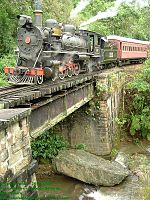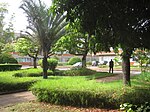CPFL Energia

CPFL Energia (former name: Companhia Paulista de Força e Luz) is the second largest non state-owned group of electric energy generation and distribution in Brazil and the third biggest Brazilian electric utility company, after Eletrobras and Energisa. The corporation is composed by CPFL Brasil, CPFL Piratininga, CPFL Paulista, CPFL Geração, CPFL Renováveis, Rio Grande Energia (RGE) and SEMESA. Each of these companies operates as a holding company that owns dozens of other companies. Its headquarters are located in Campinas, the third-largest city in state of São Paulo. In 2017, it was purchased by the Chinese utility State Grid Corporation of China, a state-owned enterprise under State-owned Assets Supervision and Administration Commission of the State Council.
Excerpt from the Wikipedia article CPFL Energia (License: CC BY-SA 3.0, Authors, Images).CPFL Energia
Rua Luiz Otavio, Campinas Chácara Primavera
Geographical coordinates (GPS) Address Nearby Places Show on map
Geographical coordinates (GPS)
| Latitude | Longitude |
|---|---|
| N -22.858269444444 ° | E -47.045441666667 ° |
Address
CPFL Sede
Rua Luiz Otavio
13087-560 Campinas, Chácara Primavera
São Paulo, Brazil
Open on Google Maps










